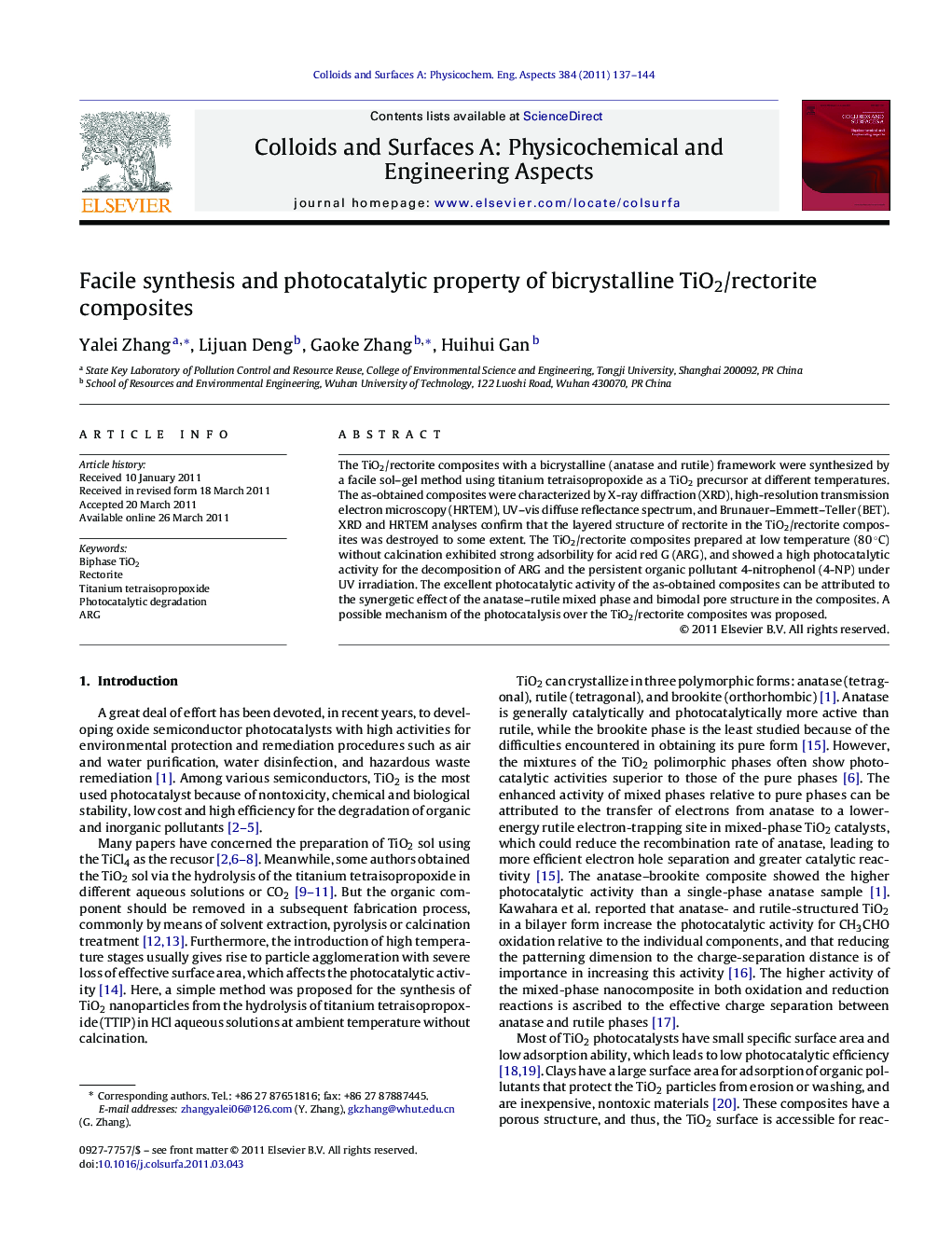| Article ID | Journal | Published Year | Pages | File Type |
|---|---|---|---|---|
| 594634 | Colloids and Surfaces A: Physicochemical and Engineering Aspects | 2011 | 8 Pages |
The TiO2/rectorite composites with a bicrystalline (anatase and rutile) framework were synthesized by a facile sol–gel method using titanium tetraisopropoxide as a TiO2 precursor at different temperatures. The as-obtained composites were characterized by X-ray diffraction (XRD), high-resolution transmission electron microscopy (HRTEM), UV–vis diffuse reflectance spectrum, and Brunauer–Emmett–Teller (BET). XRD and HRTEM analyses confirm that the layered structure of rectorite in the TiO2/rectorite composites was destroyed to some extent. The TiO2/rectorite composites prepared at low temperature (80 °C) without calcination exhibited strong adsorbility for acid red G (ARG), and showed a high photocatalytic activity for the decomposition of ARG and the persistent organic pollutant 4-nitrophenol (4-NP) under UV irradiation. The excellent photocatalytic activity of the as-obtained composites can be attributed to the synergetic effect of the anatase–rutile mixed phase and bimodal pore structure in the composites. A possible mechanism of the photocatalysis over the TiO2/rectorite composites was proposed.
Graphical abstractUV–vis absorption spectral changes of ARG during the photocatalytic process over the TiO2/rectorite composites obtained at 80 °C under UV light irradiation.Figure optionsDownload full-size imageDownload as PowerPoint slideHighlights► TiO2/rectorite composites with bicrystalline framework were prepared successfully. ► The mixed-phase titania contributes to high photocatalytic activity of composites. ► The OH was considered the main reactive species in the photocatalysis process.
